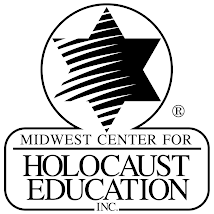The problem all teachers face is finding time to get the information to our students. The resources are out there, and sometimes can be overwhelming. The number of documentaries, movies, and presentations available on DVD and on the internet allow teachers a wide variety of resources. While teaching an abbreviated lesson on the Holocaust, in an already constrained schedule, it will behoove teachers to preselect portions of media sources. Knowing the time for a segment to begin on DVD will help a teacher forward to the important part, but will still cost time as discs are traded in and out of the player, and the obligatory warnings play out. Wouldn’t it be nice to have all of the clips from each DVD in a central location, ready to just hit play? Wouldn’t be nice to move straight from “Schindler’s List” to “Escape from Sobibor”? Or how about contrasting the depictions of Hotel Milles Collins in “Hotel Rwanda” to those in “Sometimes in April”? To switch DVDs, teachers will lose time and students attention. So, how do we solve this problem?
Here is one solution: Cut the segments you want from DVD, and put them together on a separate data DVD, or play them from your computer in a media player. It is not as difficult as it may initially sound, nor as expensive. This is one solution to the problem, and it works if you have the time. The programs are designed as format converters, and enable ripping DVDs from a DVD drive to your hard drive.
Needed:
1. You will need to download Magic Ripper. I use Magic Ripper on a regular basis. The cost is $35 for the program, and really comes in handy. This is a download from the site, and you will receive the registration code when you pay. Load it up, and you are ready to go.
2. Windows Movie Maker, which is a program available as a free download (if it isn’t already in your program list under the Start Menu).
3. A DVD drive. The drive must be able to read/play DVDs (can you watch movies on your computer? It should say DVD on the face of the drive, also). It is even better if you have a DVD burner, but is not required.
Ok. Now you are ready to begin:
a. Pop a DVD in the drive. Usually, Windows asks you what you want to do with this disc. Either choose to open Magic Ripper. If it doesn’t open automatically, start the program from the Start Menu, and it will read whatever disc is in the drive. From here, my expertise is in Magic Ripper, so let me drop a few hints: Make sure to save it somewhere you can find it (c:desktop, etc.), choose if you want subtitles on or not, and be sure to get the main set of chapters. If you have a disc with two to three segments (PBS mini- series will load several on one disc), be sure to choose the proper option. Look closely at this, as the extras will be offered up, also. Magic Ripper will tell you how many chapters are included, and that may be your only indication. Choose your output format (WMV, Ipod, AppleTV, AVI). WMV is Windows Media Video, and plays very well with Movie Maker. Click start. It will take between two and ten hours to convert.
b. Now that the movie is transferred over to the new format, open up Windows Movie Maker. Import the video into Movie Maker. Once it is imported, drag the file down to the bottom panel, and you can move to the section you want.
c. Find the exact point that you want to start with, and you can trim everything before that segment. Repeat by finding the end of the clip, and you can trim the extra.
d. Go to the File menu, and choose to “Publish Movie”. It is recommended that you publish the movie as a “DV-AVI”. From here, the media can be played back on the computer, burned to a DVD, or saved to a jump drive.
Windows offers software to burn the program onto a DVD if you have a burner and the time. This can be a time consuming process, but in the end, it can be worthwhile in that you build a collection of videos in a central location, ready to use, rather than searching, swapping, and losing the class.
List of movie clips recommended by MCHE:
· The Eternal Jew (9:00-22:01) to illustrate the Nazi racial attitude toward Jews
· Lodz Ghetto (6:40-12:03 and 23:30-28:23) to illustrate deteriorating conditions in the ghetto
· Shoah (Disc 1 1:54:56-2:09:44) to illustrate the killing method and the continual adjustments made by the Nazis
· Partisans of Vilna (20:40-36:17) to illustrate the decision making process for Jews thinking about armed resistance
· Shoah (Disc 1 44:17-1:03:10) to illustrate the attitudes of bystanders and collaborators
· Escape from Sobibor (First 18 minutes through the selection on the ramp) to illustrate the process
· Escape from Sobibor (46:44-54:05) to illustrate concept of collective responsibility
· The Last Days (21:07-43:50) to illustrate arrival, processing and living at Birkenau - if you have time in the class do (13:08-17:09 and 21:07-43:50) to include deportation and ghettoization



